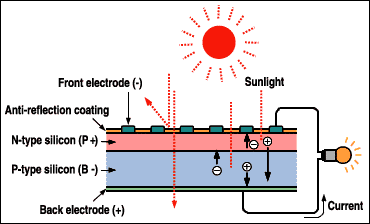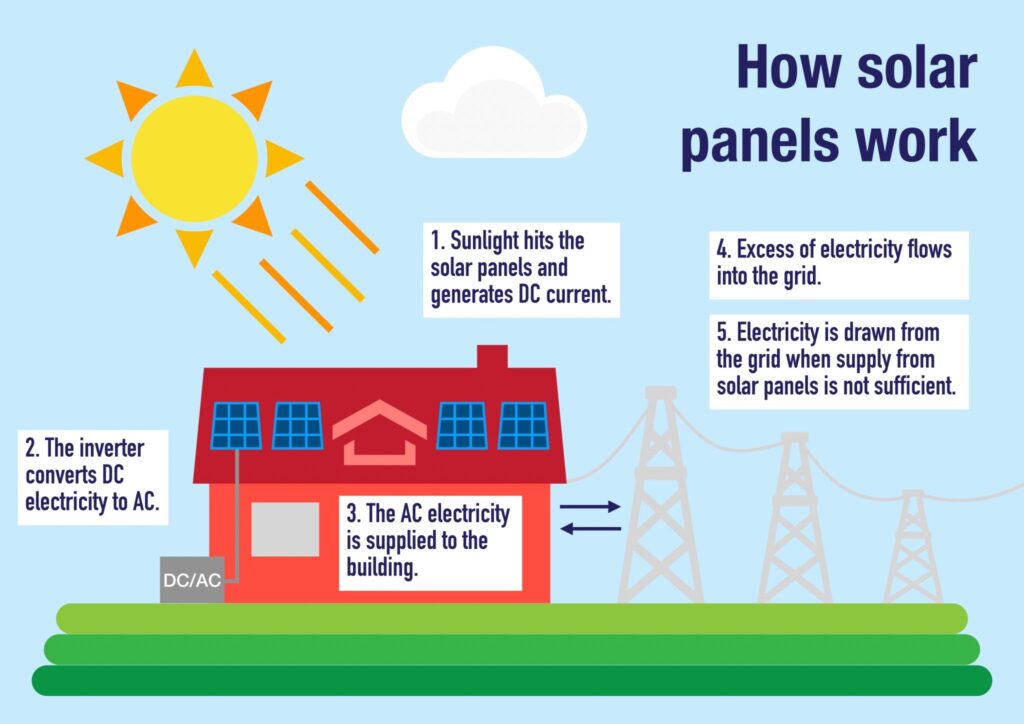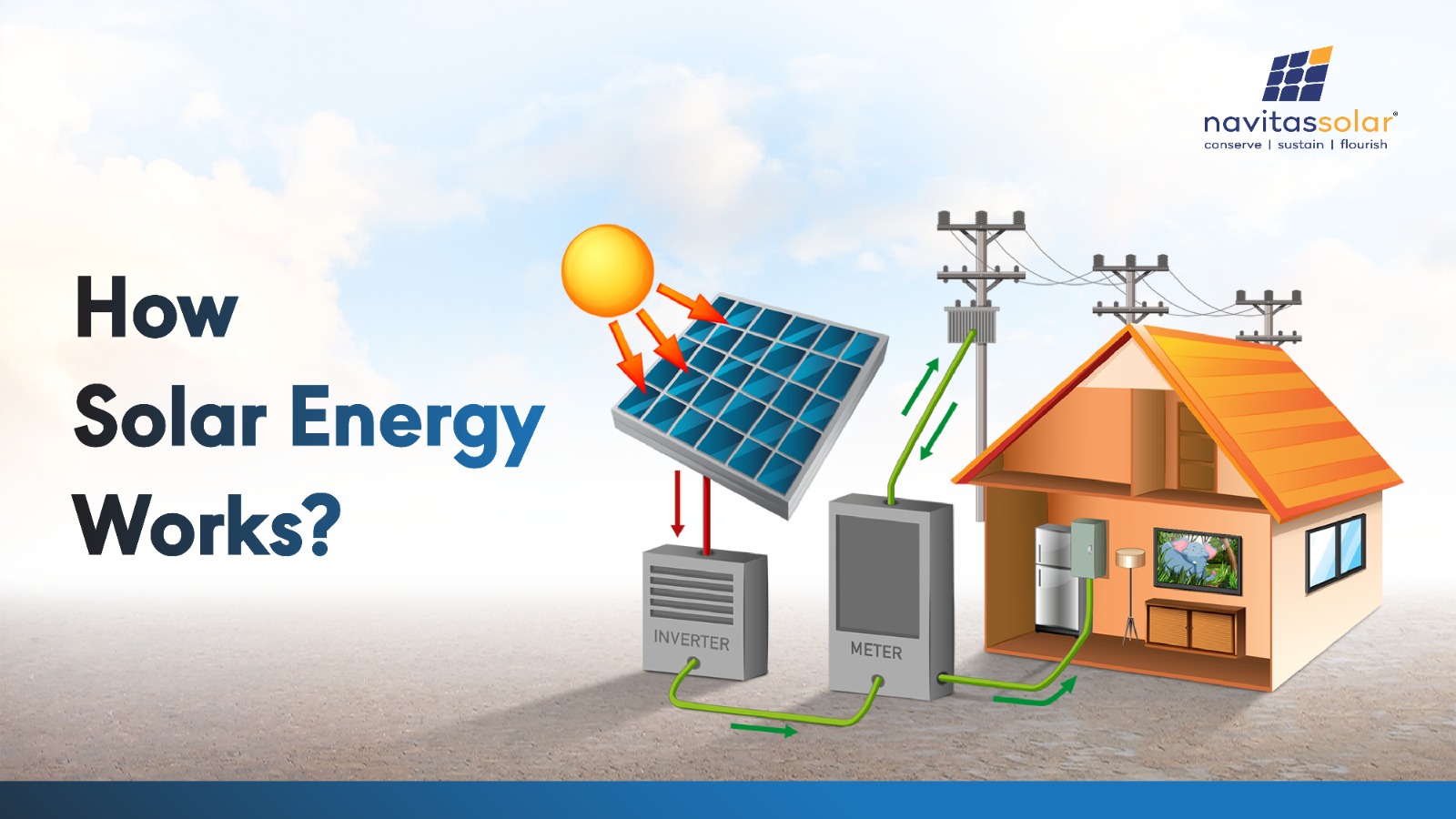How Solar Energy Works?
Solar Energy Works In 1839, Edmond Becquerel discovered Photovoltaic Effect which indicates that semiconductor material can generate electricity when they are exposed to electricity. When particles of sunlight or photons knock electrons free from atoms, electrons are set into the motion. This flow of electrons is called as electricity and solar panels are designed in such a way that it can convert this electricity into usable electric current.
When sunlight strikes at solar cells, it energizes electrons and set them into the motion. The electrons flow out of the junction between cell layers and metal plates are cables capture the flow of electrons and generate electricity.
Solar Energy Works cells are made from silicon-a semiconducting material which can absorb the sunlight and is able to convert it into electricity. Silicon is most common material which is used in 95% of solar cells manufactured nowadays.

There are two layers of silicon used in PV cells. P-type layer is silicon doped by Boron and N-type layer is silicon doped by Phosphorous. An electric field generated at the junction between the layers. This electric field pushes electrons to flow via solar cell resulting into generation of electrical current production. Bus Bars on the sides of each solar cell collect the current and push it out by the connecting wires.
Panels are protected from the environment by Glass which offers durability also. Encapsulant sheets & Backsheets are used to protect Solar Energy Works against environmental conditions. Solar panels have an ARC (Anti Reflective Coating) which increases sunlight absorption and gives cells maximum sunlight exposure.
Solar energy works in this way at Residential, Commercial & Industrial rooftops.

- Solar Cells absorb sunlight and convert it into DC current
Solar cells generate DC current when they are exposed to sunlight due to the photovoltaic effect. Solar Energy Works are the main material which does the main and important work when it comes to generating electricity from solar energy.
- Inverters convert DC current into AC current
Why Solar panels generate electricity in DC form. At our residential, commercial and industrial buildings, our machinery is basically running on AC current. So, produced solar DC electricity is passed through the Solar Inverter which converts it into the AC electricity.
- Solar inverters power all the electrical appliances of your home, office, industry, commercial buildings etc. by converted AC current.
- When an on grid solar Solar system is installations, it’s connected with the state’s grid. In this connection, solar electricity generated from solar power plant is utilized by the consumer and in case of deficit, the extra energy is withdrawn from the grid. In case of surplus solar energy, extra energy is fed back into the grid.
- Under the Net Metering billing policy, for surplus solar energy generated during daylight hours, consumers are credited net metering is a billing mechanism that credits solar energy system owners for the electricity they add to the grid.
- For example, if a residential customer has a PV system on their roof, it may generate more electricity than the home uses during daylight hours. Net metering is an electricity billing mechanism that allows consumers who generate some or all of their own electricity to use that electricity anytime, instead of when it is generated. Monthly net metering allows consumers to use solar power generated during the day at night. Annual net metering rolls over a net kilowatt-hour (kWh) credit to the following month, allowing solar power that was generated in July to be used in December.
- For, Net Metering, every consumer need to follow state DISCOM’s policies.
- In case of Off grid solar systems, excess electricity is stored in batteries and utilized when there’s no solar electricity available.


 Online | Privacy policy
Online | Privacy policy
Related Posts
You May Also Like
Bonito Series: Driving Innovation in…
Read MoreTOPCon Series: The Next Generation…
Read MoreValuable Points to Remember During…
Read MoreNavitas Planet Partners with Hysolwin…
Read MoreDriving Towards a Sustainable Future:…
Read MoreWhy Do Top-Grade EVA Sheets…
Read MoreBonito Series: Driving Innovation in…
Read MoreTOPCon Series: The Next Generation…
Read MoreValuable Points to Remember During…
Read MoreNavitas Planet Partners with Hysolwin…
Read MoreDriving Towards a Sustainable Future:…
Read MoreWhy Do Top-Grade EVA Sheets…
Read MoreBonito Series: Driving Innovation in…
Read MoreTOPCon Series: The Next Generation…
Read MoreValuable Points to Remember During…
Read MoreNavitas Planet Partners with Hysolwin…
Read More